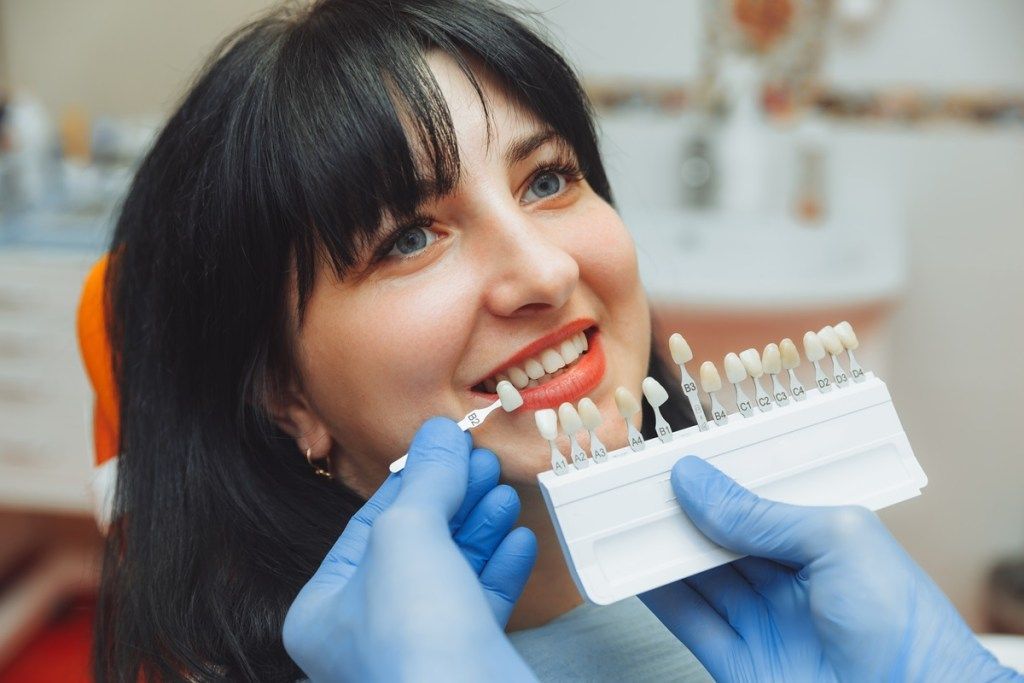Blogs

By 360 Dental Pc
•
April 30, 2025
Wisdom teeth, also known as the third molars, are the last teeth to emerge in the back of your arches of teeth. These teeth typically appear between the ages of 17-25, and while wisdom teeth can erupt without issues, many people experience complications due to a lack of space in the mouth. When a wisdom tooth does not have enough room to emerge or grows at an incorrect angle, it becomes impacted. This can lead to various dental problems and often requires surgical intervention. Why Do Wisdom Teeth Become Impacted? Impaction occurs when a wisdom tooth doesn’t have enough room to fully emerge from the gum line or align properly in the mouth. Impacted wisdom teeth can grow at an angle toward other teeth, toward the back of the mouth, or even horizontally within the jaw. Some wisdom teeth may be partially impacted, emerging partway through the gums. When teeth are only partially exposed, they can leave openings for bacteria to grow, leading to infections and other complications. Impacted wisdom teeth are fairly common and can affect people differently based on factors like the size of the jaw and the position of other teeth. Signs and Symptoms of Impacted Wisdom Teeth While some people with impacted wisdom teeth experience no symptoms, others may have noticeable discomfort or even pain. Here are some common signs that a wisdom tooth may be impacted: Pain or tenderness: If the tooth is pressing on surrounding structures or tissue, you may feel pain in the back of the mouth, which can worsen when chewing. Swelling and redness: Impacted wisdom teeth can lead to inflammation in the gums around the tooth, causing noticeable swelling or redness. Jaw stiffness: The jaw around the affected area may feel tight or sore. Bad breath or unpleasant taste: Partially impacted teeth can trap food and bacteria, leading to an infection or bad breath. Headaches or earaches: Some people experience referred pain, where discomfort radiates to areas such as the ears or head due to the pressure from impacted wisdom teeth. If you experience these symptoms, it’s a good idea to consult your dentist, as impacted wisdom teeth can cause further dental issues if left untreated. Complications Associated with Impacted Wisdom Teeth Impacted wisdom teeth can lead to a variety of dental complications, some of which can have long-term effects on oral health. Common issues include: Tooth decay: Impacted wisdom teeth are harder to clean, which can lead to cavities. Gum disease: Bacteria around impacted teeth can cause an infection in the gums, leading to pain, swelling, and even periodontal disease if left untreated. Crowding: Impacted wisdom teeth can press against neighboring teeth, pushing them out of alignment and causing crowding. This is especially problematic if you’ve undergone orthodontic treatment. Cysts and tumors: In rare cases, impacted wisdom teeth can form cysts or tumors in the jawbone. These growths can damage the surrounding teeth and bone tissue. Treating Impacted Wisdom Teeth The treatment for impacted wisdom teeth depends on the severity of the impaction and the symptoms you’re experiencing. If your wisdom teeth aren’t causing pain or complications, your dentist might choose to monitor them with regular check-ups. However, in cases where impacted teeth are causing discomfort or potential health risks, extraction is often recommended. The extraction process varies depending on the position and depth of the impaction. Local anesthesia is typically used, and in more complex cases, your dentist or oral surgeon might recommend sedation for added comfort. During the procedure, the tooth may be removed in sections if it’s deeply embedded to minimize disruption to the surrounding tissue. After extraction, your dentist will provide instructions for post-surgery care to minimize pain and swelling. Following these instructions carefully can help ensure a smooth recovery. A Healthy Smile for Life Understanding impacted wisdom teeth and knowing the signs to watch for can help you stay proactive about your oral health. If you suspect an impacted wisdom tooth, consulting with your dentist can prevent potential complications later on. Whether monitored or removed, addressing impacted wisdom teeth early can protect your smile and contribute to a lifetime of great dental health. The post Understanding Impacted Wisdom Teeth first appeared on Dental Signal .

By 360 dental pc
•
April 30, 2025
Every parent wants to give their child the healthiest start in life, which includes a bright, confident smile. Early orthodontic intervention, known as interceptive orthodontics, can be highly beneficial for children with emerging alignment or bite issues. But how do you know if your child might need orthodontic care sooner rather than later? By learning to recognize a few key signs, you can ensure your child gets the right help at the right time. Here are some signs that your child might benefit from early orthodontic care. Why Consider Early Orthodontic Intervention? Orthodontic treatment usually starts between ages 7-10. By this time, children typically have a mix of primary (baby) and permanent teeth, making it easier for an orthodontist to identify any alignment problems or potential bite issues. Early intervention can often guide the growth of the jaw and the positioning of teeth, helping to prevent more severe issues down the road. Interceptive orthodontics may not always involve braces; it can include other types of treatment to address alignment or spacing problems. Key Signs That Your Child Might Need Orthodontic Care Here are a few signs that may indicate a need for early orthodontic evaluation: Crowded or misaligned teeth: If your child’s teeth appear crowded or overlapping, it may indicate that their jaw doesn’t have enough space for permanent teeth to come in. Addressing crowding early can help avoid more intensive treatments, such as tooth extractions, in the future. Difficulty chewing or biting: If your child struggles to chew or bite food properly, it might be due to alignment issues with their teeth or jaws, such as an overbite, underbite, or crossbite. Difficulty with basic functions like chewing can indicate a need for orthodontic care. Prolonged thumb-sucking or pacifier use: These habits, if they persist beyond age 4, can push the front teeth out of alignment, causing what’s known as an open bite. Early orthodontic evaluation can identify any negative impacts from these habits and offer solutions to prevent or correct alignment issues. Protruding front teeth: Noticeably protruding upper front teeth can make children more prone to injury and may lead to self-consciousness. Orthodontic intervention can help bring these teeth into proper alignment, improving both appearance and safety. Early or late loss of baby teeth: Baby teeth lost much earlier or later than average can interfere with the alignment of incoming adult teeth. An orthodontic evaluation can help determine if early treatment is needed to ensure there’s enough space for the new teeth. If you notice any of these signs, it may be time to schedule an evaluation with an orthodontist. During this visit, the orthodontist will examine your child’s teeth, jaw, and bite to develop a treatment plan. In some cases, the orthodontist may recommend monitoring your child’s development with regular check-ins to determine the best time for treatment. Benefits of Early Orthodontic Treatment Addressing orthodontic issues at a young age can offer several long-term benefits, including: Improved jaw development: Early treatment can help guide the development of your child’s jaw, which allows adult teeth to erupt properly aligned. Reduced need for extractions: With expanders or other devices, orthodontists can create the necessary space for adult teeth, which can reduce the need for extractions or more invasive treatment later. Improved confidence : A child’s self-esteem can greatly benefit from an aligned, healthy smile. Early treatment can prevent issues that might otherwise become sources of insecurity or discomfort. Setting the Foundation for a Healthier Smile Taking steps to address orthodontic issues early can set your child up for a lifetime of dental health and confidence. By monitoring for signs and consulting with an orthodontist, you’re giving your child the best chance at a functional, attractive smile that will serve them well into adulthood. A proactive approach to orthodontic health is an invaluable gift—one that will help them chew, speak, and smile with ease for years to come. The post Signs Your Child May Need Early Orthodontic Care first appeared on Dental Signal .

By 360 Dental PC
•
April 10, 2025
Your smile is often the first thing people notice about you. It’s a powerful tool for expressing emotions, building relationships, and boosting your confidence. If you’ve ever felt self-conscious about your smile, whether due to crooked teeth, discoloration, gaps, or other issues, you may have considered a full smile makeover. But with the financial commitment and time involved, you might wonder: is a full smile makeover really worth getting? Let’s explore what this transformative process entails and help you weigh the benefits against the potential costs. What Is a Full Smile Makeover? A full smile makeover is a comprehensive, personalized dental treatment designed to improve both the appearance and function of your teeth. It’s not just about cosmetic changes – it can also correct issues that affect your bite, speech, and overall oral health. The procedures involved in a smile makeover vary based on your unique needs, but can include: Teeth whitening Veneers Orthodontics (like braces or clear aligners) Dental implants or bridges Gum contouring Crowns or fillings Composite bonding By combining these treatments, your dentist can create a natural-looking, beautifully aligned smile that complements your facial features. The Benefits of a Full Smile Makeover So why should you consider a full smile makeover? There are numerous potential benefits that go beyond just aesthetics. Boosted Confidence: One of the most immediate effects of a smile makeover is the boost in self-esteem you’re likely to feel. When you love your smile, you’ll naturally want to show it more often. This can make you feel more confident in social settings, at work, and even in your personal relationships. Improved Oral Health: Many cosmetic procedures that are part of a smile makeover also improve the health of your teeth and gums. For instance, correcting misaligned teeth with braces or Invisalign can make cleaning easier, reducing the risk of cavities and gum disease. Similarly, replacing missing or damaged teeth with implants or crowns can prevent further complications like jawbone deterioration or shifting teeth. Enhanced Functionality: A smile makeover isn’t just about how your teeth look. It’s also about how they work. If you’ve been dealing with issues like difficulty chewing, speech impediments, or jaw pain, treatments like orthodontics, implants, or crowns can restore the proper function of your mouth. This can significantly improve your day-to-day comfort and quality of life. Long-Term Investment A full smile makeover is a long-term investment in both your appearance and your oral health. Many of the procedures offer lasting results. For example, veneers and crowns can last over a decade with proper care. By investing in your smile now, you’re likely to enjoy the benefits for many years to come. The Potential Drawbacks Of course, like any significant investment, a full smile makeover comes with potential drawbacks that you’ll need to consider before making a decision. Cost: Smile makeovers can be expensive, especially if multiple treatments are needed. The cost will vary depending on the complexity of the procedures, your location, and the expertise of your dentist. Procedures like veneers or implants can add up quickly per tooth, and many insurance plans won’t cover cosmetic treatments. However, some dentists offer payment plans or financing options to help make the cost more manageable. Time Commitment: A full smile makeover often requires multiple appointments spread out over several months or even longer. Certain procedures, like orthodontics, may take years to complete. If you’re seeking an immediate transformation, this extended time frame might be frustrating. Be prepared for the commitment involved in multiple visits, potential recovery times, and follow-up care. Possible Discomfort: Some of the treatments involved in a smile makeover, such as braces, extractions, or gum contouring, can involve discomfort during the procedure or recovery. While your dentist will take steps to minimize this, it’s important to be aware of the potential discomfort before starting the process. Is a Smile Makeover Right for You? Whether or not a full smile makeover is worth it depends on your specific needs, goals, and resources. If you’re dealing with multiple cosmetic or functional dental issues that affect your confidence, health, or daily comfort, the benefits may far outweigh the costs. However, if your concerns are minor or if the financial and time commitments feel overwhelming, there are often smaller, less invasive treatments that can still make a significant impact. It’s always a good idea to consult with a trusted dentist who can guide you through your options. They can provide a detailed plan tailored to your needs, as well as a clear understanding of the time and financial investment required. Transforming Your Smile Ultimately, a full smile makeover is about more than just aesthetics. It’s about transforming your self-image, boosting your confidence, and improving your oral health. While it requires careful consideration and planning, the long-term benefits can be life-changing. If you’ve ever wondered whether a smile makeover is worth it, consider this: your smile is an integral part of who you are, and investing in it can be one of the most empowering choices you make. The post Is a Full Smile Makeover Worth Getting? first appeared on Dental Signal.

By 360 Dental PC
•
April 10, 2025
After months or even years of waiting, the day has finally come and it’s time to get your braces removed. Having your braces taken off is an exciting milestone, as it means you can finally enjoy the results of all your hard work and patience. But what happens next? It’s important to know what to expect, from adjusting to the feel of your teeth without braces to caring for your retainer. Soreness and Sensitivity One of the first things you might notice after your braces come off is that your teeth feel a bit sore or sensitive. This sensitivity is normal and should subside within a few days. After all, your teeth and gums have adjusted to the constant pressure of your braces, so they need a little time to adapt to their new state. During this period, it’s a good idea to stick to softer foods, avoid extremely hot or cold foods, and give your teeth a chance to settle. The Role of Your Retainer Once your braces are off, your orthodontist will likely provide you with a retainer to wear. Retainers are critical because they help maintain the new alignment of your teeth. Without a retainer, there’s a risk that your teeth could shift back to their original positions. Retainers can be either removable or fixed, depending on your orthodontist’s recommendation. Removable retainers can be taken out when you eat and brush your teeth, while fixed retainers are bonded to your teeth and stay in place at all times. It’s essential to wear your retainer exactly as your orthodontist instructs. Typically, you’ll need to wear it full-time initially and then gradually reduce wear time as your teeth stabilize. Proper use of your retainer is the key to keeping your smile looking great for years to come. Maintaining Your New Smile Now that your braces are off, maintaining your new smile should be a top priority. Here are a few tips to help keep your teeth in great shape: Brush and floss daily: Just because the braces are gone doesn’t mean you can ease up on brushing and flossing. Good oral hygiene is essential to prevent cavities and gum disease. Regular dental check-ups: Continue visiting your dentist every six months for routine cleanings and exams. Be cautious with sticky and hard foods: While you no longer have to worry about braces breaking, sticky and hard foods can still cause damage to your teeth or retainer. Your New Smile for Years to Come The journey doesn’t end when your braces come off; it’s only the beginning. With proper care and regular use of your retainer, you can keep your teeth beautifully aligned for a lifetime. Enjoy the freedom of eating your favorite foods without restrictions, but don’t forget to maintain good oral hygiene. Taking these steps ensures that the smile you’ve worked so hard for will stay with you, giving you the confidence and joy of a straight, healthy smile for years to come. The post What to Expect After Getting Your Braces Removed first appeared on Dental Signal .


